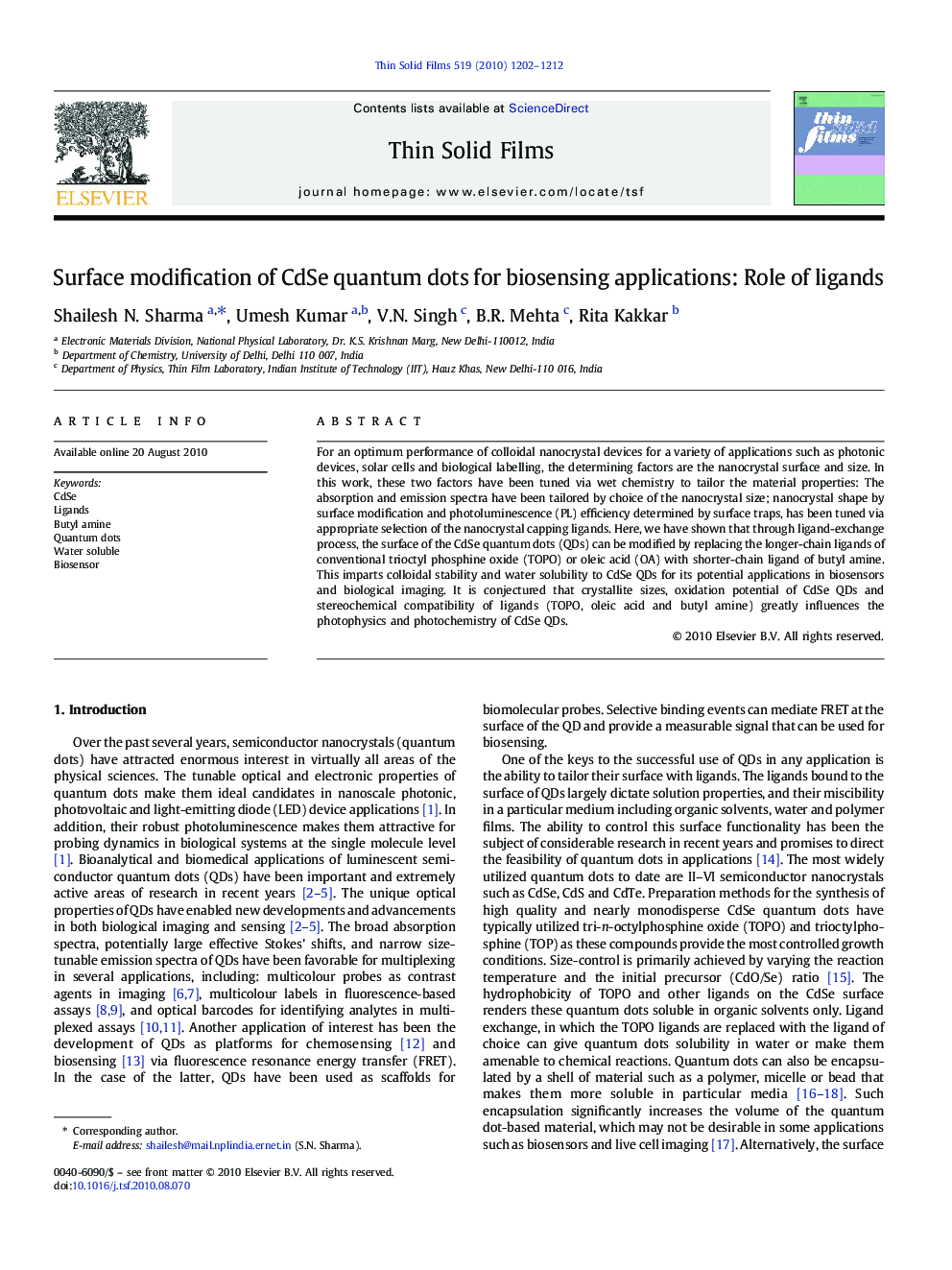| Article ID | Journal | Published Year | Pages | File Type |
|---|---|---|---|---|
| 1669986 | Thin Solid Films | 2010 | 11 Pages |
For an optimum performance of colloidal nanocrystal devices for a variety of applications such as photonic devices, solar cells and biological labelling, the determining factors are the nanocrystal surface and size. In this work, these two factors have been tuned via wet chemistry to tailor the material properties: The absorption and emission spectra have been tailored by choice of the nanocrystal size; nanocrystal shape by surface modification and photoluminescence (PL) efficiency determined by surface traps, has been tuned via appropriate selection of the nanocrystal capping ligands. Here, we have shown that through ligand-exchange process, the surface of the CdSe quantum dots (QDs) can be modified by replacing the longer-chain ligands of conventional trioctyl phosphine oxide (TOPO) or oleic acid (OA) with shorter-chain ligand of butyl amine. This imparts colloidal stability and water solubility to CdSe QDs for its potential applications in biosensors and biological imaging. It is conjectured that crystallite sizes, oxidation potential of CdSe QDs and stereochemical compatibility of ligands (TOPO, oleic acid and butyl amine) greatly influences the photophysics and photochemistry of CdSe QDs.
